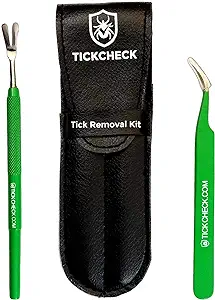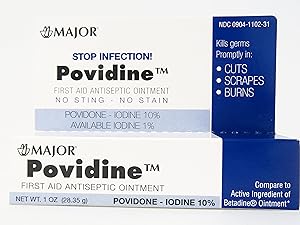What non-painful bumps on a cat's back are there?
Well, there are many! Depending on the age and breed, the chances of the occurrence of a particular bump on your cat’s back are different. For example, cancer rarely occurs in young cats and ticks are virtually absent on cats that do not go outside. But what types of bumps actually exist on the cat’s back?
Just a boring summary! A lipoma, sebaceous gland cyst, an insect sting, a tick (tick bite), a cyst, a blood blister, a deformity or even an old fracture of his vertebrae (a new fracture is painful and therefore falls under a different category), an ingrown hair, an allergic reaction, a bruise or all forms of tumors and cancer. So those are quite a few possibilities for a non-painful bump on a cat’s back. And we will discuss them below.
A lipoma is a non-painful bump on a cat's back
We start with a lipoma as the cause of a non-painful bump on your cat’s back. This is a benign proliferation of fat cells. So it officially is a tumors, but is in no way a problem for your cat. Unless this non-painful fat lump on your cat’s back gets in the way mechanically. It is not very common in cats, but is certainly not a rarity. They grow over time, but not excessively fast. A lipoma will never grow through other tissue and will not spread to other places. It is possible that a lipoma develops elsewhere, but that is not a metastasis of the previous lipoma, but a new lipoma.
A lipoma feels like a round, soft, well-defined sphere on the back. This bump is not painful and your cat will not react when touched. A Siamese has a slightly higher chance of developing a fat lump than other breeds. Most cats with a fat lump are older than 8 years. If you want to be sure about this non-painful bump on your cat’s back, your vet can take some cells out of the bump with a needle and view them under the microscope. The microscope slide immediately shows stuf that resembles fat floating on water. If your vet is unsure, the tissue sample can be sent to a laboratory, but this is usually not necessary.
Since your cat does not suffer from it and it is not dangerous for him, treatment is not necessary, unless it interferes with his life. However, it will not go away on its own.

The sebaceous gland cyst as a bump on a cat's back
A sebaceous gland is a small gland that sits in the skin and has its opening in the hair follicle. In this way, the sebum formed gives the hair a beautiful shine and good resistance to dirt. But as soon as the opening of this gland becomes clogged, the sebum formed cannot escape. The gland swells and gets bigger over the course of months. In principle, a sebaceous gland cyst is a non-painful bump on a cat’s back, but occasionally it can become infected or inflamed and become a painful bump on your cat’s back.
A sebaceous gland cyst mainly occurs in cats older than 10 years. The Persian cat suffers from this on average more often than other breeds. It is a bump that appears to be on top but just slightly in the skin and is about half an inch in size on the cat. When you poke a hole in it with a needle, you can squeeze out white-gray sebum. But of course you should never do this without disinfecting it very well with alcohol beforehand! Otherwise, the sebaceous gland cyst can start to infect and this is not easy to resolve. As long as your cat is not bothered by it, nothing needs to be done about this bump. It is not cancer and most likely it will stop growing on its own. But it almost never resolves on its own.
An insect sting on a cat's back
All animals are of course once in a while stung by a wasp or a bee. But since cats are rather curious animals, they will get stung a little more often. Although the beak and the legs are more often pricked, it still occurs regularly on the back. Your cat’s body responds to the sting by triggering certain cells to release histamine. This histamine causes swelling in the skin. In most cases, this is a non-painful swelling on your cat’s back. It is usually about 1 cm wide. If you look closely you can see a small hole in the skin in the middle of the bump. An insect sting gradually thins down to normal skin. So there is no clear separation between the bump and the surrounding tissues.
This non-painful bump does not need to be treated. It recovers itself after about 3-4 days. But if it takes on extreme forms, your cat may have an allergic reaction to the sting. In that case, it is wise to go to your vet.
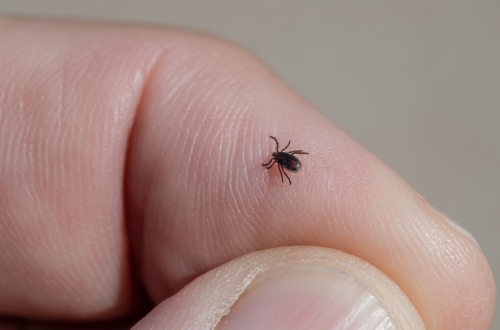
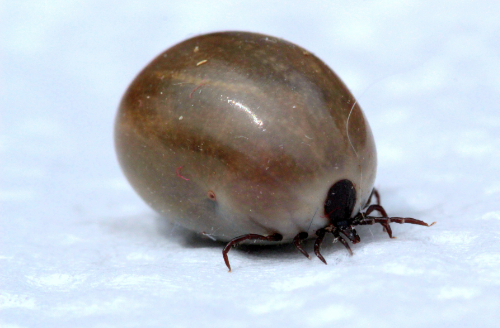
The tick or tick bite is a non-painful bump on a cat's back
In many cases, cat owners come to the vet’s office worried because they have felt a bump on their cat’s back. In their panic, they have not looked closely and it turns out to be a tick. A tick is a spider-like animal that sucks blood from your cat (or other animals) in order to grow and reproduce. They start very small when they get on your cat (about 2-3mm in size) and in about 3-4 days they suck up to a marble size with blood. They then release your cat and fall off him.
The tick can carry certain diseases such as Lyme disease, so it is important that you remove the tick as soon as possible. You do this with the help of tick pliers. You grab the tick at the location of where it enters the skin and then unscrew it in about 3 turns. Left or right, it doesn’t matter. You can (largely) prevent ticks by giving your cat a tick repellent. Any swelling in the skin as a result of the tick will go away on its own.
A cyst is a non-painful bump on your cat's back
A cyst is a watery fluid-filled cavity on your cat’s back. It gives a non-painful bump in and on the skin with a clear border where the cyst ends. Typically, cysts don’t get super big and are about 1-2 cm in diameter and then stop growing.
In principle, they do not cause any complaints and only when they get in the way when moving or lying down do we remove them surgically. We can also suck out the fluid with a needle and a syringe. But then the fluid is just recreated and the cyst fills up again after a month or two. So it won’t solve the problem permanently. That is why it is wiser to completely remove the bump under anaesthesia, including the wall of the cyst that produces the fluid.
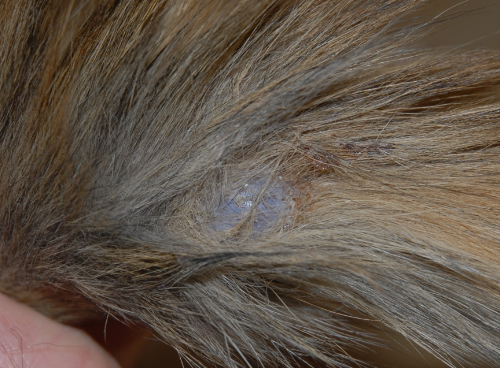
A blood blister or hematoma on your cat's back
If your cat has had an accident, a somewhat larger blood vessel may have ruptured under the skin. The blood will then run under the skin and may accumulate in a cavity. This is also called a blood blister or hematoma. However, we don’t often see this in cats. The blood blister will heal on its own over time and does not need any treatment. Unless your cat is known to have a blood clotting problem, of course. A blood blister is not common on a cat’s back.
Deformity of one or more vertebrae gives a non-painful bump on your cat's back
Normally, vertebrae are neatly lined up and have approximately the same shape. But once in a while we see a cat come to the office with a slightly deformed vertebrae. This can be congenital and present as a kitten, but can also happen later in life as a result of a fracture in a vertebra. The vertebra can then recover in a crooked position, resulting in a non-painful bump on your cat’s back. In this case, you can feel very clearly that the bump is very hard. Just like your own bones.
If your cat is not bothered by it, nothing needs to be done. There is a chance that he will get osteoarthritis in his back more easily later in life, but an operation to correct it also gives an extra chance of problems. So the pros and cons cancel each other out. If your cat does have problems with it, you can consult with your own veterinarian what can be done about it. The vet can tell you what the options are and whether it is really necessary to operate.
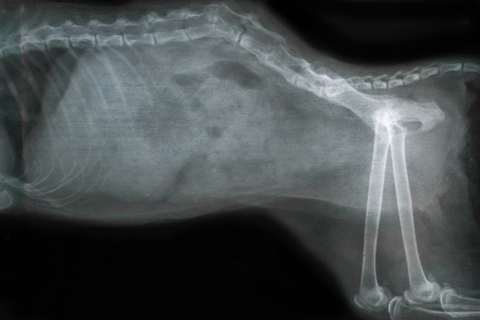
The ingrown hair on your cat's back
A hair grows in a hair follicle and protrudes from the skin through an opening. If the hair is not pointing in the right direction, a hair can grow in. The hair grows, but remains accumulated in the hair follicle. This usually results in a painless bump on your cat’s back. But sometimes it can become inflamed and then it becomes a painful bump on your cat’s back. If your cat has a dark coat, you will often see a dark “stuff” shining through the skin at the location of the bump.
It is not very common in cats, but long-haired cats are particularly susceptible to it. Treatment is not always necessary. But if it needs to be treated, we usually cut away the entire piece of skin that contains the ingrown hair. That way the hair can’t grow back in its crooked position. Because then he would again cause an ingrown hair. But if the hair is easy to grab after we made a small hole, we also want to try to pull it out with tweezers and see if it will arise again. After all, sometimes in life you are lucky!
An allergic reaction causes a non-painful bump on your cat's back
Cats sometimes have an allergic reaction to food or environmental substances. Then they have itching or inflammation in certain parts of the body. But when there is a bump very locally, it can also be an allergic reaction. For example, on something they ate outside or on an insect sting. The swelling then developed very acutely within a few hours. And it’s usually about the size of a fist. Depending on the location and degree of irritation, treatment may or may not be necessary. In principle, it will go away on its own after a few days, but if your cat is very bothered by it, your vet can give it medication that will speed up this process.
A bruise on your cat's back
Actually, this topic does not belong on this page. A bruise is often painful. But not extreme. That is why I treat it on this page anyway. As a result of an accident, the skin on your cat’s back can become internally damaged. Consider, for example, a slam or kick to his back. The skin is not torn or abraded, but the tissues underneath are slightly damaged. These tissues release certain substances to the rest of the body, which attract moisture, and therefore restorative substances. The disadvantage of that amount of fluid, however, is that the tissue in that area will swell.
In this case, it is of course important to check whether your cat has not suffered any further injuries. For example, look at his teeth for fractures and his nails for damage. And make sure you don’t feel any crusts on the rest of his body. Also, take a good look at the color of his gums. This should be light pink and not white or very pale. If you do see that, there is a chance that he also has internal damage in the form of internal bleeding. He can die from this. So when in doubt, you should take him to your vet immediately.
In principle, your cat will heal on its own from a bruise in the form of a non-painful bump on its back. But if there is more damage to his body, it may still be wise to have your cat checked by your vet. Better safe than sorry, right?
A wart on your cat's back
Warts are very common in older cats. They are elevations of the top layer of the skin and are usually hairless and small. They can be a bit reminiscent of a small mushroom in shape, but sometimes they are also kind of flattened.
A wart doesn’t need to be removed, but it probably won’t go away on its own either. Only if your cat suffers from it is it wise to have it surgically removed. If the wart looks a bit irritated, you can rub the wart twice a day for 5 days with betadine ointment to prevent infection. Make sure that your cat does not lick it, otherwise he will have diarrhea. If he does lick it, you can better use (a less powerful) honey ointment. However, you have to put this on the wart 3 times a day. The wart will not go away from these treatments, but the infection will be resolved.
A tumor or cancer as a non-painful bump on your cat's back
Tumors can develop on the back of a cat, especially older cats. A tumor is a proliferation of cells. The cells begin to multiply and continue to do so. Healthy cells have a brake on multiplication, but in this case the brake is broken. This causes the tumor to grow in size. In general, the faster the tumor grows, the more malignant it is. But there are many different tumors and therefore different consequences. For example, your cat may have a mast cell tumor, a sarcoma, or a fibroma. Cancer is especially common in older cats and did not develop in a week.
If you think there is a tumor on your cat’s back, it is wise to take your cat to your vet. He or she can say more about the risk of cancer and whether it is wise to have further research carried out into this tumor. This usually is done by taking some cells from the tumor with a needle and syringe and sending them to a laboratory. That way you can get a diagnosis of what tumor it is, whether it is cancerous and how the tumor will progress if you do nothing.
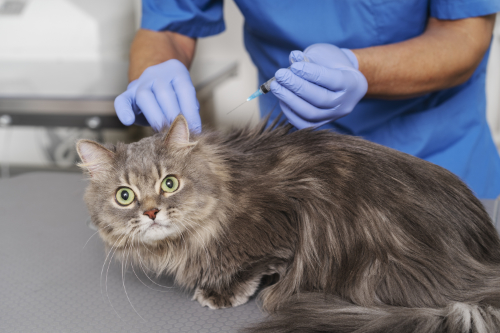
Good luck!
Hopefully you have found the answer to what the non-painfull bump on the back of your cat is. Or at least you have gotten the information about what to do next. Anyway, we wish you and your cat good luck!

